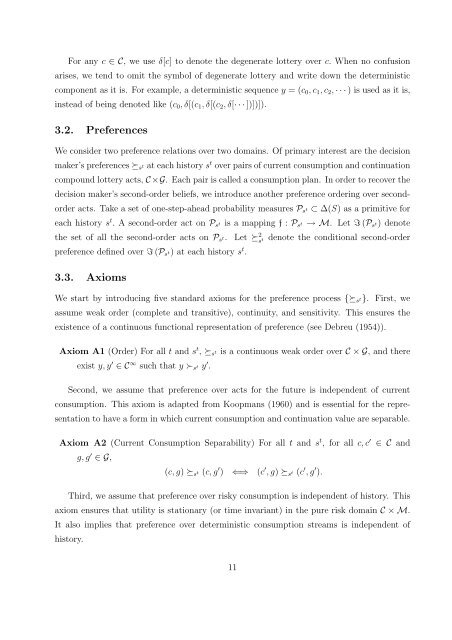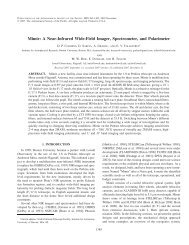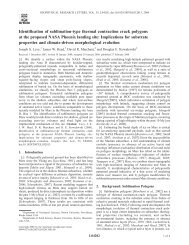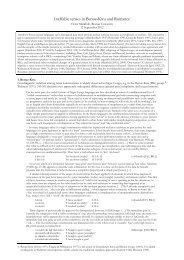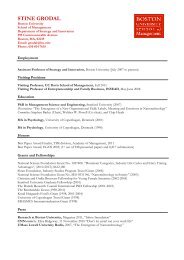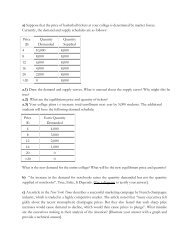Intertemporal Substitution and Recursive Smooth Ambiguity ...
Intertemporal Substitution and Recursive Smooth Ambiguity ...
Intertemporal Substitution and Recursive Smooth Ambiguity ...
Create successful ePaper yourself
Turn your PDF publications into a flip-book with our unique Google optimized e-Paper software.
For any c ∈ C, we use δ[c] to denote the degenerate lottery over c. When no confusionarises, we tend to omit the symbol of degenerate lottery <strong>and</strong> write down the deterministiccomponent as it is. For example, a deterministic sequence y = (c 0 , c 1 , c 2 , · · · ) is used as it is,instead of being denoted like (c 0 , δ[(c 1 , δ[(c 2 , δ[· · · ])])]).3.2. PreferencesWe consider two preference relations over two domains. Of primary interest are the decisionmaker’s preferences ≽ s t at each history s t over pairs of current consumption <strong>and</strong> continuationcompound lottery acts, C ×G. Each pair is called a consumption plan. In order to recover thedecision maker’s second-order beliefs, we introduce another preference ordering over secondorderacts. Take a set of one-step-ahead probability measures P s t ⊂ ∆(S) as a primitive foreach history s t . A second-order act on P s t is a mapping f : P s t → M. Let I (P s t) denotethe set of all the second-order acts on P s t. Let ≽ 2 sdenote the conditional second-ordertpreference defined over I (P s t) at each history s t .3.3. AxiomsWe start by introducing five st<strong>and</strong>ard axioms for the preference process {≽ s t}. First, weassume weak order (complete <strong>and</strong> transitive), continuity, <strong>and</strong> sensitivity. This ensures theexistence of a continuous functional representation of preference (see Debreu (1954)).Axiom A1 (Order) For all t <strong>and</strong> s t , ≽ s texist y, y ′ ∈ C ∞ such that y ≻ s t y ′ .is a continuous weak order over C × G, <strong>and</strong> thereSecond, we assume that preference over acts for the future is independent of currentconsumption. This axiom is adapted from Koopmans (1960) <strong>and</strong> is essential for the representationto have a form in which current consumption <strong>and</strong> continuation value are separable.Axiom A2 (Current Consumption Separability) For all t <strong>and</strong> s t , for all c, c ′g, g ′ ∈ G,(c, g) ≽ s t (c, g ′ ) ⇐⇒ (c ′ , g) ≽ s t (c ′ , g ′ ).∈ C <strong>and</strong>Third, we assume that preference over risky consumption is independent of history. Thisaxiom ensures that utility is stationary (or time invariant) in the pure risk domain C × M.It also implies that preference over deterministic consumption streams is independent ofhistory.11


